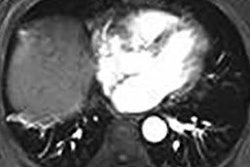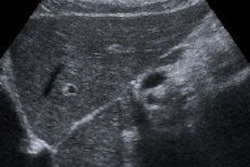Screening cirrhosis patients with liver ultrasound for hepatocellular carcinoma (HCC) detected more cancers at an earlier stage, according to a meta-analysis published on April 1 in PLOS Medicine. Furthermore, screened patients were more likely to receive curative treatment and survive longer.
The systematic review included 47 studies with more than 15,000 patients, according to the team of researchers led by Dr. Amit Singal of the University of Texas Southwestern Medical Center. The pooled three-year survival rate was 50.8% among the 4,375 patients who underwent HCC surveillance, compared with 27.9% among the 6,115 patients without prior surveillance. The difference was statistically significant (p < 0.001).
"Current data suggest that HCC surveillance is associated with significant improvement in early tumor detection," the authors wrote. "By facilitating receipt of curative therapy in a higher proportion of patients, HCC surveillance is associated with a significant improvement in overall survival."
The longer-survival finding persisted even after the researchers limited their review to studies that took into account lead-time bias. In the six studies that adjusted for lead-time bias, patients who underwent HCC surveillance had a pooled three-year survival rate of 39.7%, compared with 29.1% for nonsurveillance. The difference was also significant (p < 0.001).
Because no randomized trials exist for assessing HCC screening in patients with cirrhosis, the researchers reviewed published research that evaluated whether screening was associated with improved patient outcomes.
"However, the preponderance of data that consistently demonstrate benefits should provide sufficient rationale to recommend HCC surveillance, even in the absence of a randomized, controlled trial among patients with cirrhosis," they concluded.
While the American Association for the Study of Liver Diseases and the European Association for the Study of the Liver both recommend ultrasound surveillance every six months in high-risk patients (including those with chronic hepatitis B virus infection and/or cirrhosis), studies showed that such surveillance is performed in fewer than 20% of patients in the U.S., according to the authors. Lower surveillance rates were found among primary care physicians compared to gastroenterologists/hepatologists.



















